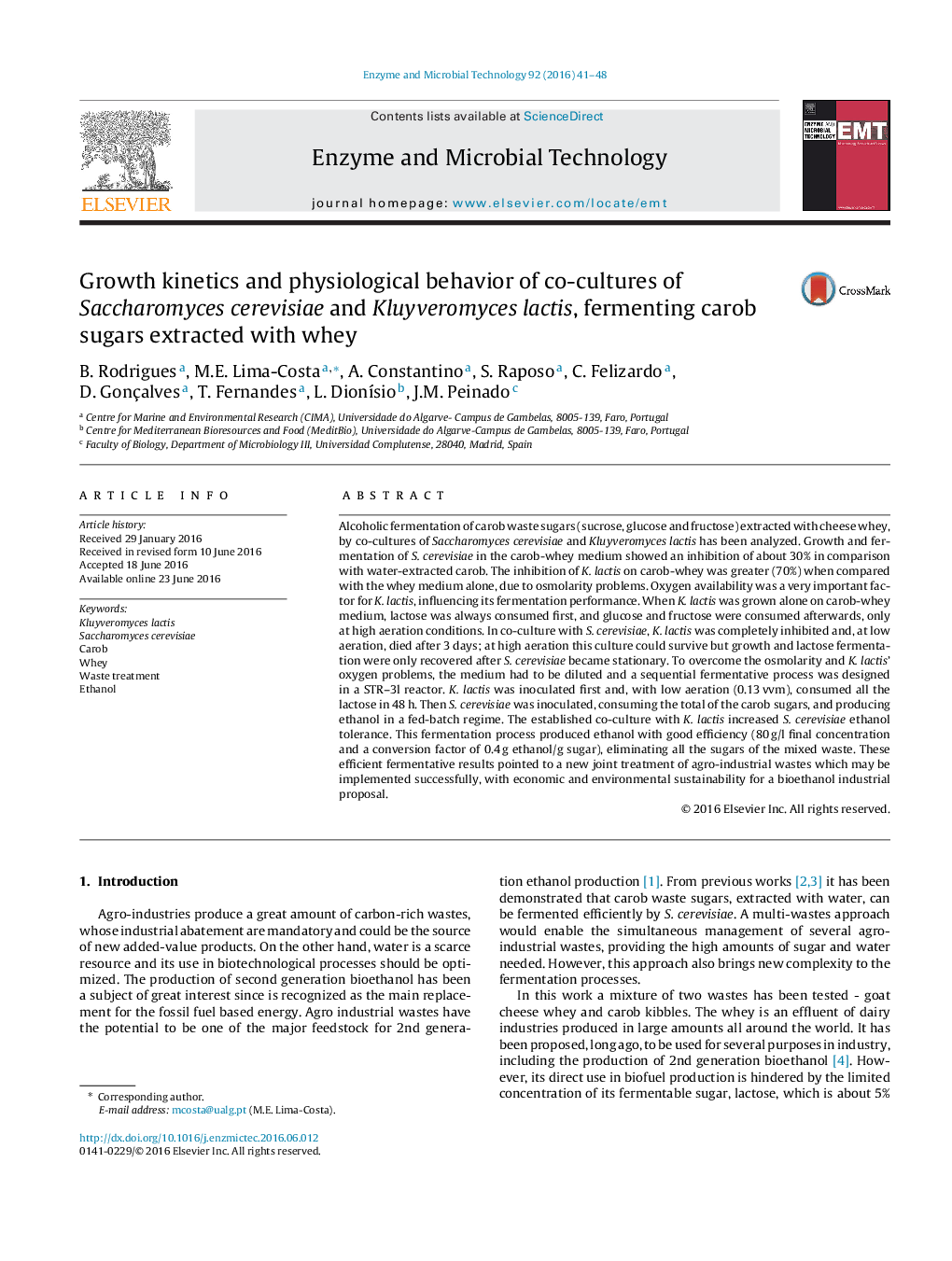| کد مقاله | کد نشریه | سال انتشار | مقاله انگلیسی | نسخه تمام متن |
|---|---|---|---|---|
| 16758 | 42610 | 2016 | 8 صفحه PDF | دانلود رایگان |

• In whey-carob medium whey is a good solvent for carob sugars but inhibits fermentation.
• K. lactis CBS 2360 consumes preferentially lactose to glucose in whey-carob medium.
• In co-cultures with S. cerevisiae, K. lactis dies at standard aeration conditions.
• Complete sugar fermentation can be obtained by sequential inoculation of yeasts.
• The joint treatment of sugar-rich wastes increases final ethanol production.
Alcoholic fermentation of carob waste sugars (sucrose, glucose and fructose) extracted with cheese whey, by co-cultures of Saccharomyces cerevisiae and Kluyveromyces lactis has been analyzed. Growth and fermentation of S. cerevisiae in the carob-whey medium showed an inhibition of about 30% in comparison with water-extracted carob. The inhibition of K. lactis on carob-whey was greater (70%) when compared with the whey medium alone, due to osmolarity problems. Oxygen availability was a very important factor for K. lactis, influencing its fermentation performance. When K. lactis was grown alone on carob-whey medium, lactose was always consumed first, and glucose and fructose were consumed afterwards, only at high aeration conditions. In co-culture with S. cerevisiae, K. lactis was completely inhibited and, at low aeration, died after 3 days; at high aeration this culture could survive but growth and lactose fermentation were only recovered after S. cerevisiae became stationary. To overcome the osmolarity and K. lactis’ oxygen problems, the medium had to be diluted and a sequential fermentative process was designed in a STR–3l reactor. K. lactis was inoculated first and, with low aeration (0.13 vvm), consumed all the lactose in 48 h. Then S. cerevisiae was inoculated, consuming the total of the carob sugars, and producing ethanol in a fed-batch regime. The established co-culture with K. lactis increased S. cerevisiae ethanol tolerance. This fermentation process produced ethanol with good efficiency (80 g/l final concentration and a conversion factor of 0.4 g ethanol/g sugar), eliminating all the sugars of the mixed waste. These efficient fermentative results pointed to a new joint treatment of agro-industrial wastes which may be implemented successfully, with economic and environmental sustainability for a bioethanol industrial proposal.
Journal: Enzyme and Microbial Technology - Volume 92, October 2016, Pages 41–48